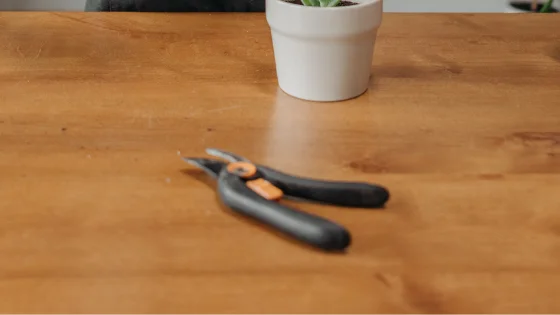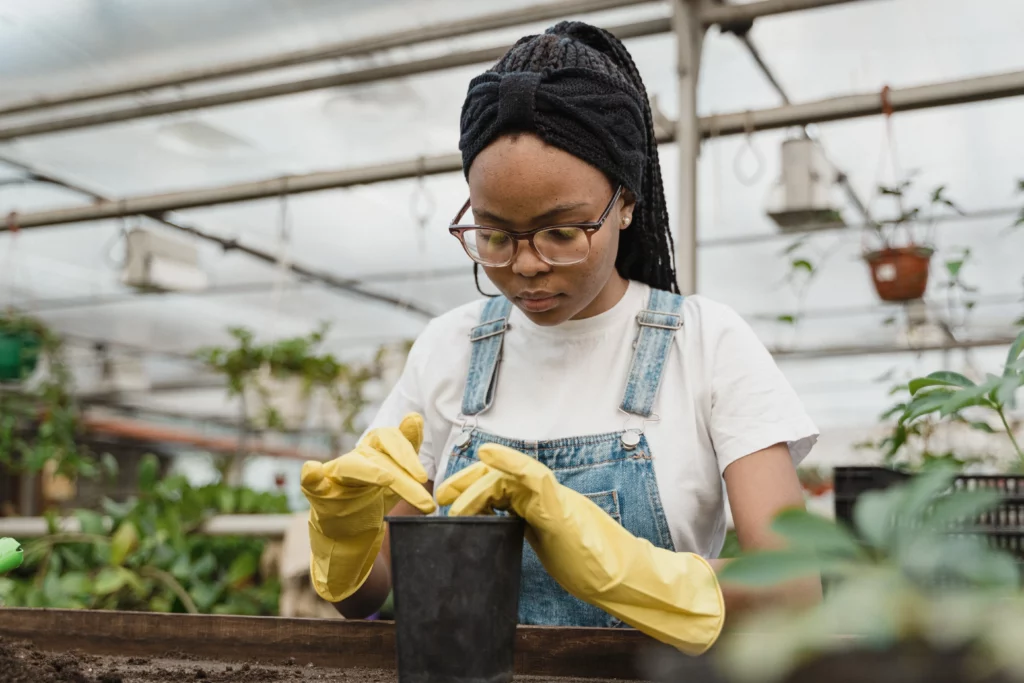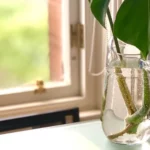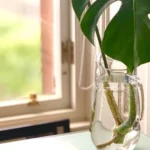Can you propagate monstera from a leaf? The answer is no. Monstera may only be grown from cuttings with nodes. A node is a collection of structures that serve as the starting point for new growth.
While a Monstera leaf may remain fresh in water for an extended period of time and even develop roots, new stem and leaf development can only be generated from a node on an existing plant stem.
Monstera leaf propagation is an appealing option, particularly when you’ve accidentally snapped off a portion and want to save it. However, it will never be able to produce a new plant. Without the node, you’ll never have more than a single leaf.
I’ll explain precisely what a node is and why it’s vital to clone your Monstera in the sections that follow.
Read More: Monstera Leaves Care – A Complete Guide
Table of Contents
What is a Monstera Node?
Nodes and internodes are the building blocks of all plant stems. The node is the point on the stem where fresh growth occurs (think buds, leaves, aerial roots, and other stems).
Internodes are those parts of the stem where nothing pushes out between nodes. There is no propagation without nodes.
So, what is the appearance of a Monstera node? Your Monstera’s new petioles (the stalk that connects the leaf to the stem) are each linked to a node.
In addition, you may see a white or brown knob emerging from the spot; this is what is known as the node. A node is where the aerial roots will emerge if they are present.
Monstera nodes may be found where two leaves meet, or when a new leaf emerges from the main stem, in the shape of a “V.” To guarantee you’ve included a node, cut two to three inches under the “V” while cutting.
Due to the fact that mature Monsteras contain several nodes, the plant has numerous options to produce new growth. A fresh set of leaves and roots may sprout from every given node.
Read More: Can Monsteras Be Propagated In Water?
Can You Propagate a Leaf Without A Node?
A Monstera leaf that lacks a node can never become a full-sized plant. A leaf with a petiole, on the other hand, may remain fresh in water for months. So, you may use it as a decorative element on its own or as a component in a bouquet of other flowers.
Some plants may produce new plants from a single leaf or even a little portion of a leaf, however Monstera does not.
To develop another plant with a stem and numerous leaves, include a node in your cutting that holds the tissue required for fresh growth.
Cutting a Node the Right Way

Having learned how to locate Monstera nodes, you can now utilize that information to take cuttings that are most likely to develop into new plants. After taking the correct cutting, you’ll be able to root it and ultimately grow a giant, mature Monstera.
Although it is theoretically feasible to propagate a Monstera from a section of stem with a node (those pieces are sometimes referred to as “wet sticks”), the process is time-consuming and unreliable. It is much easier to grow a Monstera if there is at least one leaf and an aerial root present.
Identifying the area to be cut for propagation is the first step. You can tell a leaf is separating from its stem or from another by looking for the “V” form I mentioned previously! In order to ensure that you’ve included a node, you’ll need to cut two to three inches below the “V.”
If your Monstera plant is of a substantial size, you’ll have plenty of places to cut. Keep in mind how you want the mother plant to develop and the form you want as you determine where to cut.
If you’re going to take a cutting, you should have at least one node on the stem and one to three leaves.
Using a sharp knife or pruning shears, make a cut slightly below a node. To prevent bringing disease or infection into the plant, disinfect the cutting instrument before using it.
To clean my shears, I use a diluted bleach combination of one part bleach to nine parts water or isopropyl alcohol.
For optimal results, make a rapid, clean cut. There is no need to use a sawing motion since this will result in jagged edges.
Your cutting should contain everything it needs to grow into a complete plant when you cut through the stem just below the node or aerial root (leaves, stems, and node).
Smaller leaves may also be removed at this time, so that all of the plant’s resources are concentrated on the larger leaves.
Before rooting the cuttings, some individuals like to remove the aerial roots, however this is optional. Just leave it if you like how it looks on its own. Remove it if you don’t want it.
Monstera Cuttings – How to Root Them

You have two choices for rooting your fresh cuttings: soil or water. I’ve discovered that they both work equally good, while water propagation offers the benefit of enabling you to see the roots develop.
- Before planting your fresh stem cuttings in soil or water, let them to dry out for a few minutes. This helps to avoid decomposition by allowing the cut to scab over a little.
- Prepare a pot tall enough to hold the stems erect for roots in water. For this, a tall, straight vase or jar is ideal. Add water to your container before placing your Monstera stems.
- Coiling aerial roots at the bottom of the pot is an option. There should be no leaves below the waterline.
- For propagation, I like to use filtered tap water, but anything will do. The nodes should be submerged in water once your cuts are in place.
- Your new Monstera’s roots should be around two to three inches long after about a month. When the plant reaches this stage, it is ready to be transferred into soil. Make sure the container has at least one drainage hole in the bottom and use a well-draining potting soil.
- Pick a well-draining potting mix and a small container if you’re rooting your cuttings straight in soil. Small pots are great for beginners since you can always increase the size later, but if your pot is too large, the soil will hold too much moisture, making it difficult for your plants to thrive. Monsteras are sensitive to excessive wetness.
- Rooting hormone may be applied to the end of your cutting prior to planting. For Monstera cuttings, rooting hormone isn’t essential, although it may accelerate the emergence of new root.
- It’s best to plant a cutting with all of its nodes (and, if applicable, aerial roots) buried in the soil. Your cutting should be placed deep enough so that it will be able to maintain its equilibrium.
- Stake your Monstera if you’re worried about it falling over till the root system has developed itself. Water thoroughly, and if necessary, add more soil.
- Within a few weeks, regardless of whether you root your cutting in water or soil, you should see new roots growing from the base of the cutting.
Basic Monstera Cuttings Care
Monstera cuttings need the same bright, indirect light that mature Monsteras do. Change the water at least once a week (every several days is recommended) or if it begins to appear murky.
If you notice algae growing in your pot, you may be living in an area that is overly exposed to the sun. Make sure to examine the stems and roots for any signs of decay when you change the water.
Take out anything brown or squishy. You should be able to see which sections of the plant are growing well because you’ll notice white, healthy roots and sturdy green stems.
Cuttings that are rooted in the soil are more difficult to monitor. New growth from the cutting will most likely be your first indicator that the cutting has successfully rooted.
If anything is amiss with your Monstera, you’ll see yellowed, curled, or falling leaves. If the cutting you put in soil shows none of these indicators, it’s safe to believe that everything is good under the soil.
What Should You Expect From The New Cuttings?
In one to two months, rooted Monsteras cuttings will begin to sprout new leaves. Monsteras grow rapidly in the right conditions, so it won’t be long until you’ve got a stunning new addition to your garden.
It’s worth noting that new plants will lack fenestration (the slots and holes we’ve grown to appreciate in Monsteras) for the next year or two.
As the plant grows, its leaves will get wider and broader, ultimately splitting and becoming the distinctive Monstera that we all love and admire.
Background photo created by kotkoa – www.freepik.com
Green photo created by wayhomestudio – www.freepik.com
Photo by Tima Miroshnichenko from Pexels



